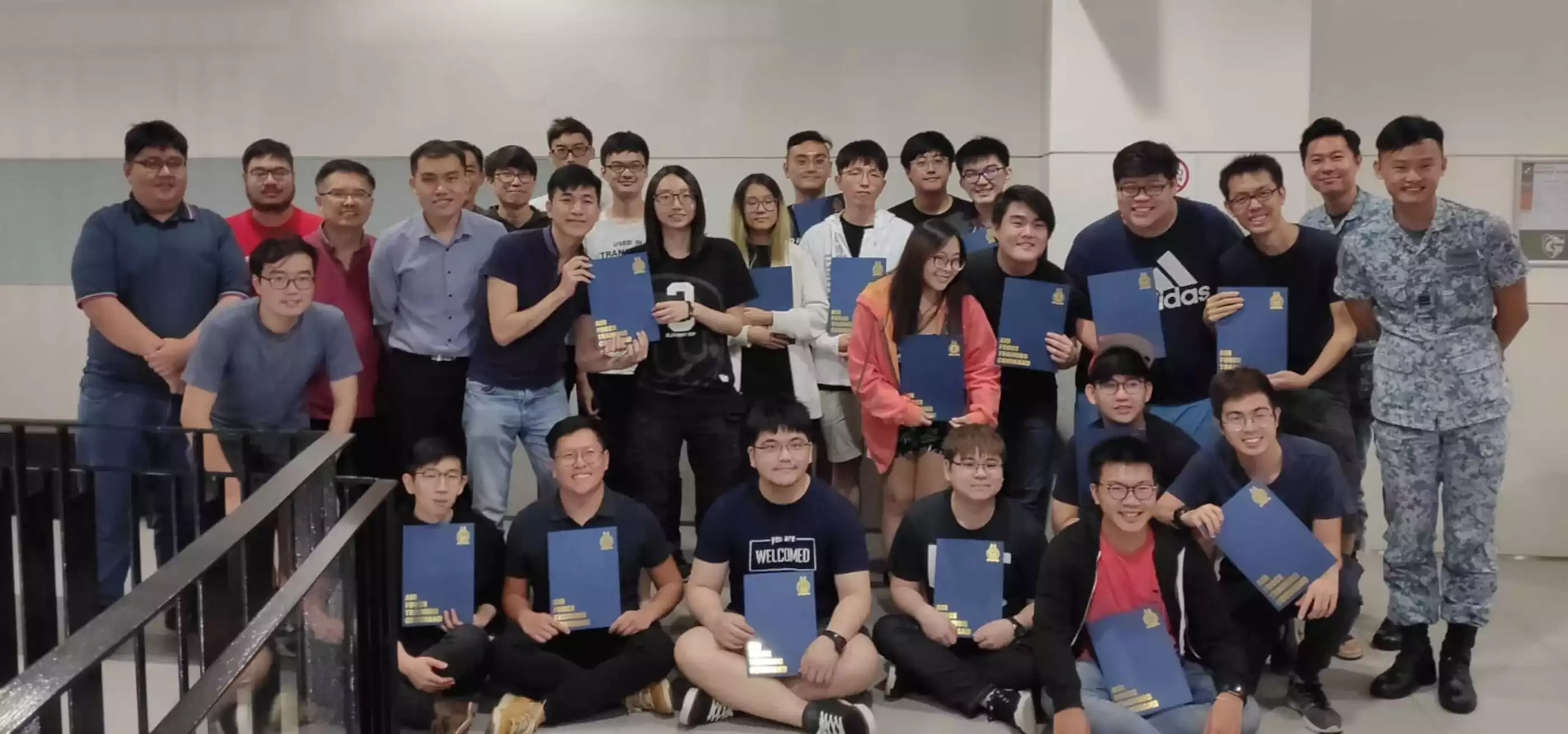Technology is permeating every industry in Singapore, and the military is no exception. Recently, a group of 18 DigiPen (Singapore) students worked on developing four proof of concepts for the Republic of Singapore Air Force (RSAF) over a period of 13 weeks. The students worked with their RSAF advisors to create virtual reality (VR) simulations on wearables to complement their current training processes.
The RSAF initially approached Singapore Institute of Technology (SIT) to explore ways in which wearable technology could be used to enhance their training. After several discussions, DigiPen (Singapore), which already has an existing elective class that focuses on exploring VR projects and its various industry uses, was brought on board. DigiPen (Singapore) was also seen as a natural fit for this project as previous industry collaborations have continuously demonstrated that our students are passionate about developing innovative digital media solutions to real-world problems, including the use of wearable VR technology.
At the start of the project, students visited the RSAF base, where they were presented with varying problem statements by the RSAF. The students then chose the projects which interested them, subsequently creating proof of concepts to address the projects’ needs.
“It’s the first time that the RSAF is working with a university on wearable VR technology, and we are very pleased with the outcome,” Lee Jun Feng, Manager (Instructional Development), Air Force Training Command, says. “VR technology is especially valuable since the nature of Air Force training is both time- and resource-consuming. The use of wearables has the potential to significantly reduce costs,” he says.
Training managers Instructor Su and Instructor Leong were two of the advisors working with the student teams on the projects, and both were equally pleased with the results. “I had goosebumps the first time I tried out the final prototype of the simulation, because it was so realistic,” Instructor Su says. “This was especially impressive given that the students had to recreate these simulations based on our descriptions and reference images, as they did not have access to the actual technical equipment that they were modelling.”
Instructor Leong was also impressed by the attention to detail given to the project. “I didn’t expect the simulation to be so polished considering the short time frame. The equipment controls were also modelled realistically, with attention to details,” he says.
Beyond the realistic graphics and smooth simulations, what particularly impressed the instructors was the multiplayer mode that was implemented for one project. This allows two trainees to join a local VR campaign and interact with each other in the same virtual world. It was a difficult feature to implement, and the students were initially unsure if they could do it given the time frame. However, they managed to deliver this feature in the final two weeks of the project.
“Overall, I’m very glad that we got to work together with DigiPen (Singapore) on this project. The students conducted themselves professionally and were all quick learners,” Instructor Su says. “We had high expectations for these simulations and pushed the students hard. Even then, they managed to exceed our expectations.”
Wearable VR technology has proven to be an engaging and scalable training tool that has multiple uses. Now that the proof of concepts have been completed and submitted to the RSAF, SIT is currently exploring applied research funding opportunities to develop the projects further. Dr. Alvin Chan, program director for DigiPen (Singapore) programs and deputy cluster director, SIT, says: “This collaboration exemplifies the synergy and partnership that SIT and DigiPen (Singapore) have. It demonstrates that through working together, we can make a significant impact to the local industries.”
